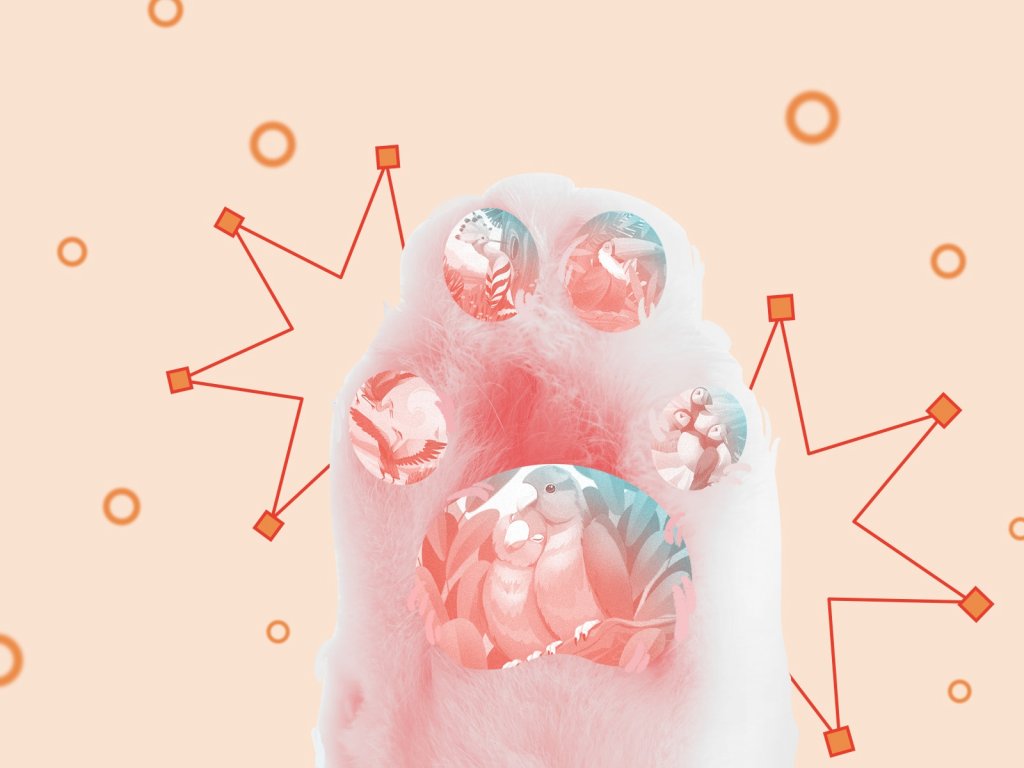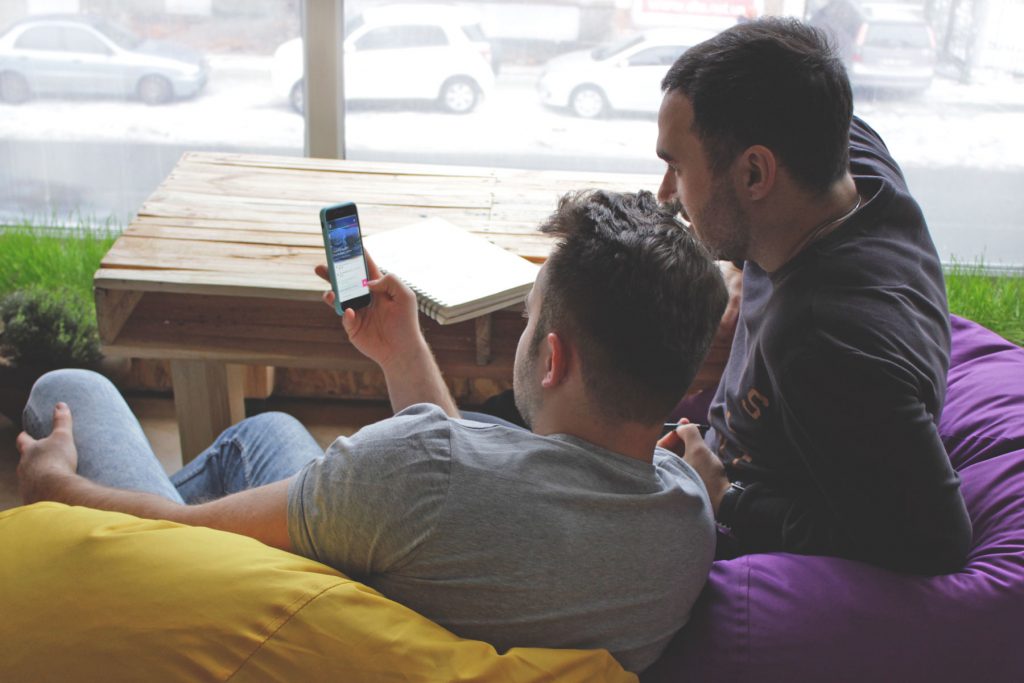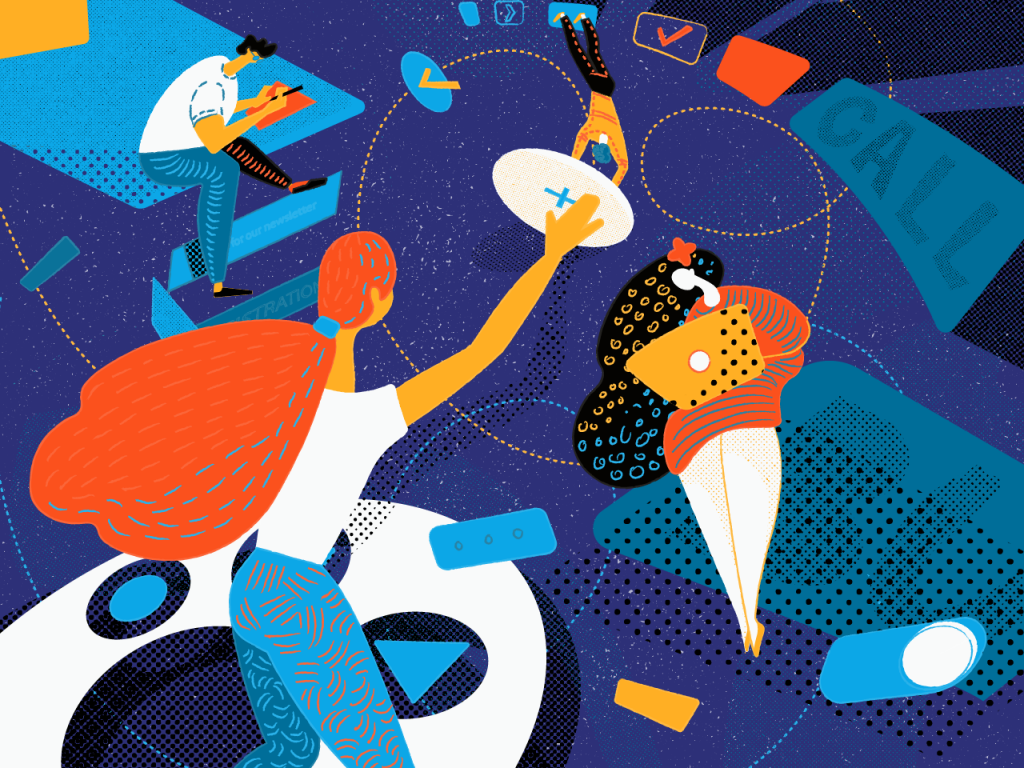For plenty of people, design is a synonym for art. And for some creative guys who do not make their living or their business that way, it perhaps is. However, for those who decide to make design their job, solving problems and pains, it obtains other perspectives and requires a different approach. Sometimes it becomes a great discovery what a goal-centered activity design is and how many problems can be solved with it, far more than just aesthetic satisfaction. It is vitally important to understand that from the first steps on the path to avoid disappointment and achieve access.
In one of the earlier articles with tips for beginners in the app and web design, our first piece of advice based on practical experience was rather simple. The first and really crucial thing may sound quite primitive: you should make sure that you really want to make it your job. There are lots of people who, being great artists, deeply creative and inspired, get broken by the necessity to work systematically with strict deadlines and loads of requirements and wishes (sometimes illogical or not-too-professional) from the customers. Clear up the nature of your job: a designer is not a pure artist free of obligations and fully devoted to creativity. Nope. In different stages of your project, you’re also going to be a researcher, an analyst, a time manager, and so on and so forth. Bear in mind all those things from the very start of the way.
For those who have made this vital decision, today we would like to recommend a useful and helpful book, “Design Is a Job” by witty expert Mike Monteiro, the co-founder of Mule Design. The book reveals all the stages of a design job, including communication with clients, organization of the process, drawing contracts, working in teams of colleagues, and the like. The author doesn’t try to make the profession look like magic: he is deeply and sometimes sharply honest about not only the benefits but also the pitfalls. In the foreword to the book, Erik Spiekermann says: “Contrary to popular belief, designers are not artists. We employ artistic methods to visualize thinking and process, but, unlike artists, we work to solve a client’s problem, not present our own view of the world.” The ideas shared by Mike Monteiro are highly practical in supporting this thesis. It is not about the design process inside only; it is more about the outer part of the design world, full of clients, requirements, goals, metrics, iterations, presentations, and discussions.
Here we would like to share a new set of design quotes that we grabbed from this book for the Tubik Quotes Collection. This time it will be fully loaded with honest and informative thoughts by Mike Monteiro. Join in!
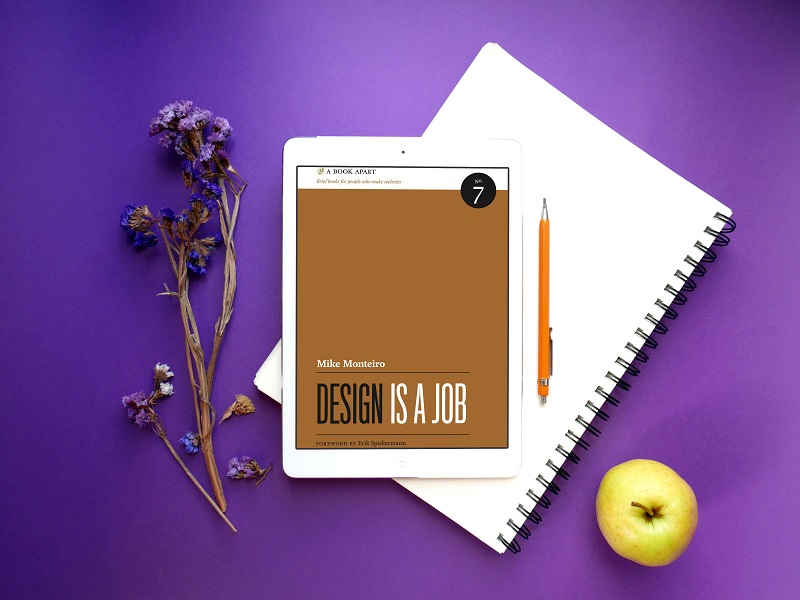
***
A designer requires honest feedback and real criticism, and that’s not going to happen in a realm where colleagues or clients are worried about crushing the spirit of a magical being. The sparkly fog of affirmation gets in the way.
***
Clients will always ask you to make their logo bigger, prescribe solutions, and ask you to do things that will make you smack your forehead. You can roll your eyes at how much they don’t understand about design, or you can roll up your sleeves and begin practicing your craft by helping them clarify what they need.
***
If you can stand in front of a client completely confident and explain why you are worth the amount you quoted, you should charge it.
***
The general rule is to involve as many people as possible in early discussions and make that number as small as possible once you go into review cycles.
***
Anyone who hires you because they thought you could do the job and then doesn’t let you do it has lost respect for either you or the design process.
***
Whether you are helping to launch a new business from scratch, or making incremental changes to an existing product, or something in between, any design task you undertake must serve a goal. It’s your job to find out what those goals are.
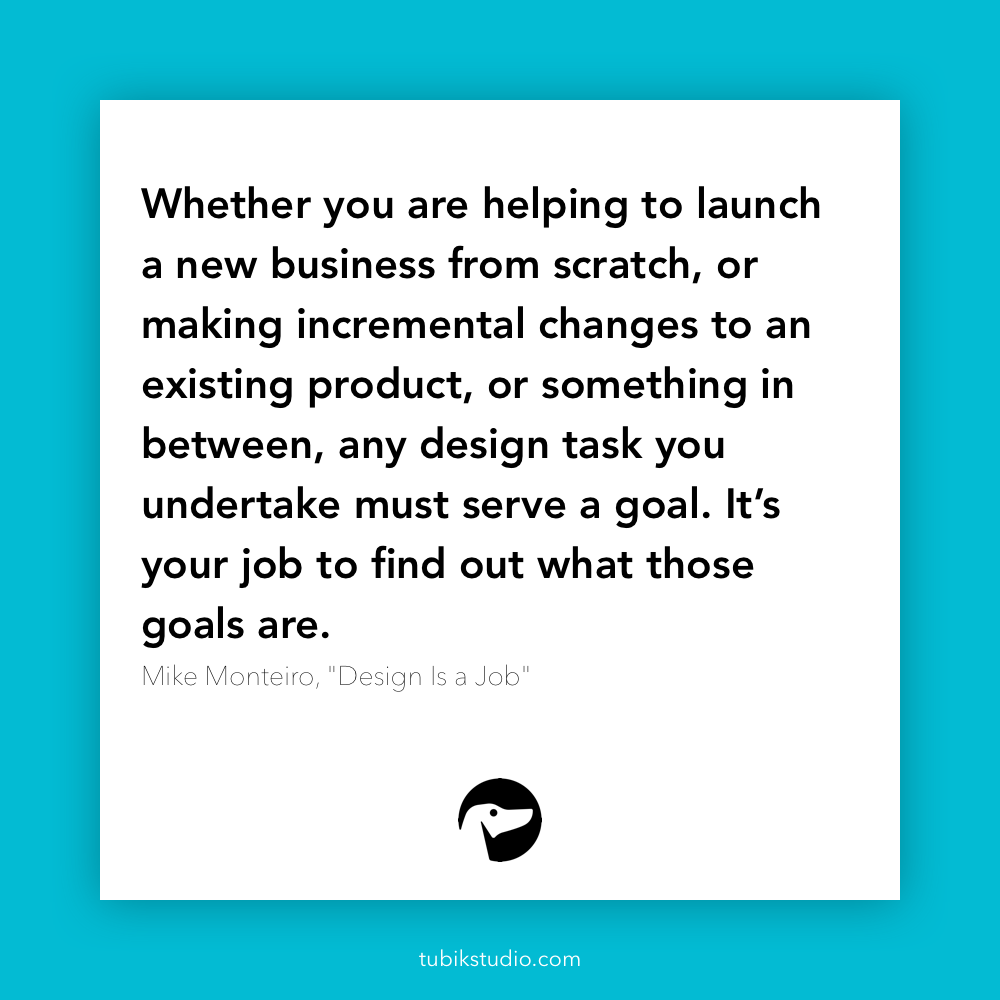
***
Successful design balances convention—familiar forms, terms, and interactions—and novelty—new forms to engage and delight the users, in the hope they will stick around a bit longer and maybe buy their pants here instead of somewhere else. As long as you remember that those new forms must serve the goals of the business. Otherwise, they’re just novelty.
***
A good client will trust your process as long as they have transparency into it, can see results, and you’re willing to bend a little here and there. Without breaking.
***
A designer who does not present his or her own work is not a designer. Presenting the work, explaining the rationale, answering questions, and eliciting feedback are part of the design toolkit. If you sit at your desk while someone else presents work to the client, you don’t get to complain about the feedback. The failure was yours.
***
Clients are the lifeblood of a healthy business. They are the oxygen in your bloodstream that keeps everything going. No matter how good you are at what you do, without someone willing to pay you for that service you will have to close your doors.
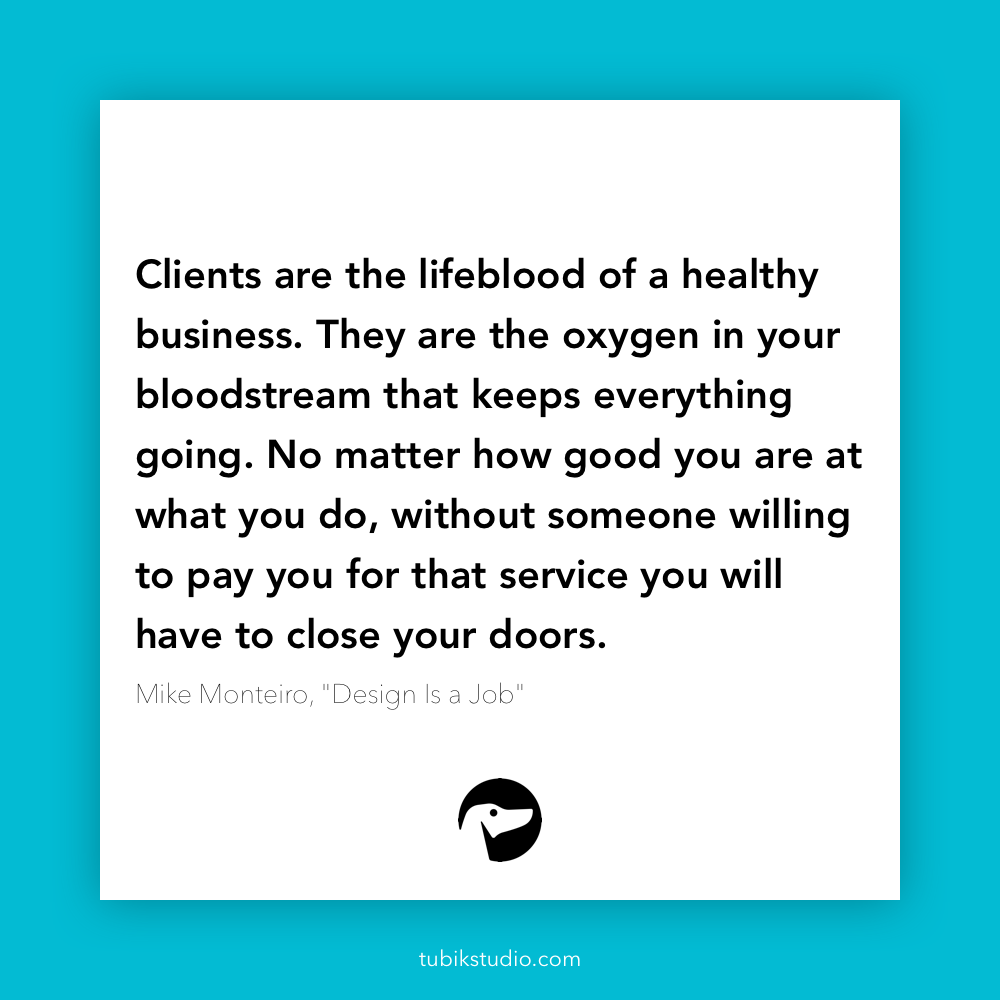
***
If you’re trying to decide between two design firms that seem equally talented, the one that came with a referral has a solid advantage. And that vetting goes both ways—a client who is well-socialized and has a good reputation in a large network is more likely to be a great client. In most cases, you’re going to be as skeptical of a client who hires a designer from an ad as they are of the designer who answered that ad.
***
…you should aim to be pleasant to work with, as everyone would rather work with someone pleasant than with an asshole. But no one wants to work with someone who’s faking it. Doing good work often requires a few hard conversations.
***
The biggest myth ever perpetuated in the design field is that good design sells itself. (The second is that Copperplate is a legitimate typeface.) Design can’t speak for itself any more than a tamale can take off its own husk. You’re presenting a solution to a business problem, and you’re presenting it as an advocate for the end users. The client needs to know that you’ve studied the problem, understood its complexities, and that you’re working from that understanding.
***
Ultimately, your job is to make the client feel confident in the design. Confidence is as much of a deliverable as anything you’re handing over in the project.
***
There’s a difference between being enjoyable to work with and being “nice.” Being nice means worrying about keeping up the appearance of harmony at the expense of being straightforward and fully engaged. Sometimes you need to tell a client they’re making the wrong call.
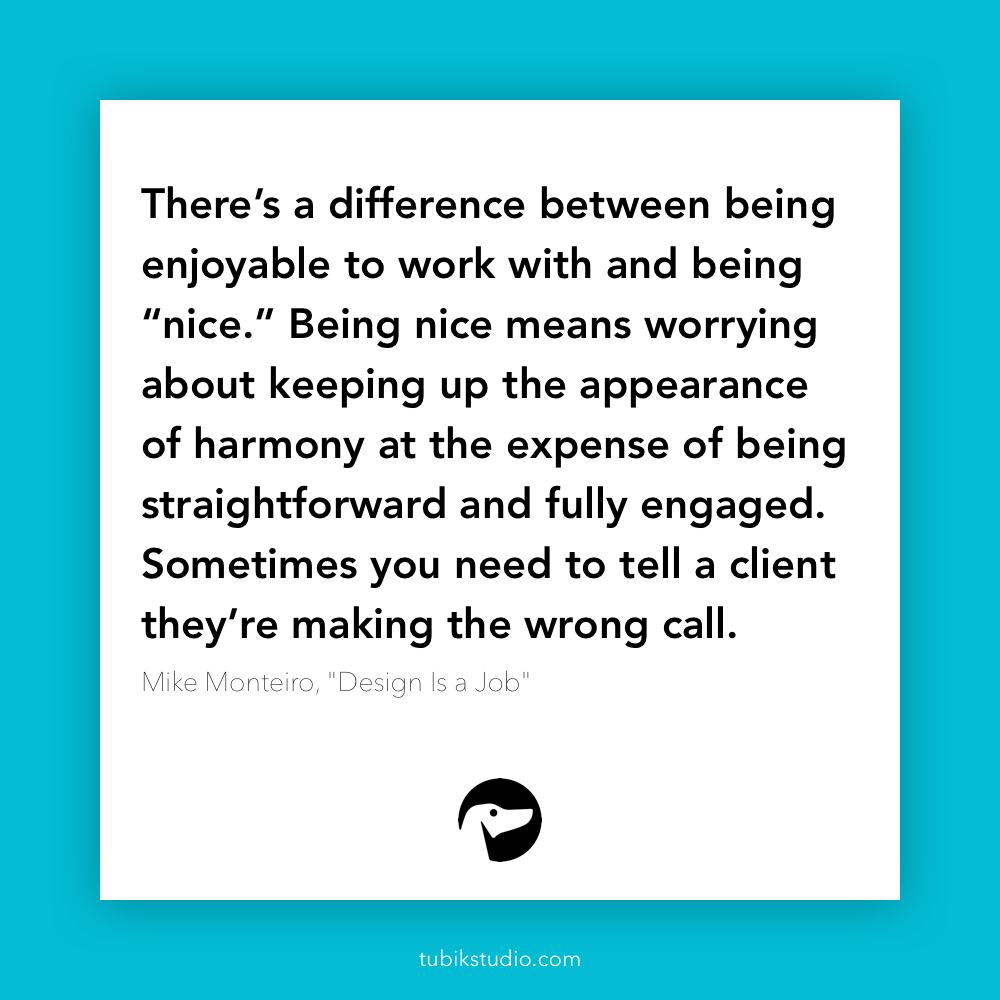
***
Of course, being the most pleasant person in the world won’t help your cause if the work isn’t good. But don’t make the mistake of thinking the quality of your work by itself will be a shining beacon that pulls clients near.
***
You can do a lot to show a client how valuable time is in how you comport yourself throughout the project. Run your meetings and work sessions efficiently. Come in prepared. Don’t run over. Don’t hang out. Don’t train clients to think you’ve got extra time on your hands.
***
At the risk of sounding like a broken record, stay in good communication with your clients at all times. They will accept your process as long as you are showing them results. Make sure to set their expectations correctly as to what is happening when.
***
Over the years the one constant that we’ve been able to rely on is that how a potential client behaves in the business development process is exactly how they will behave during the project. Trust your gut.
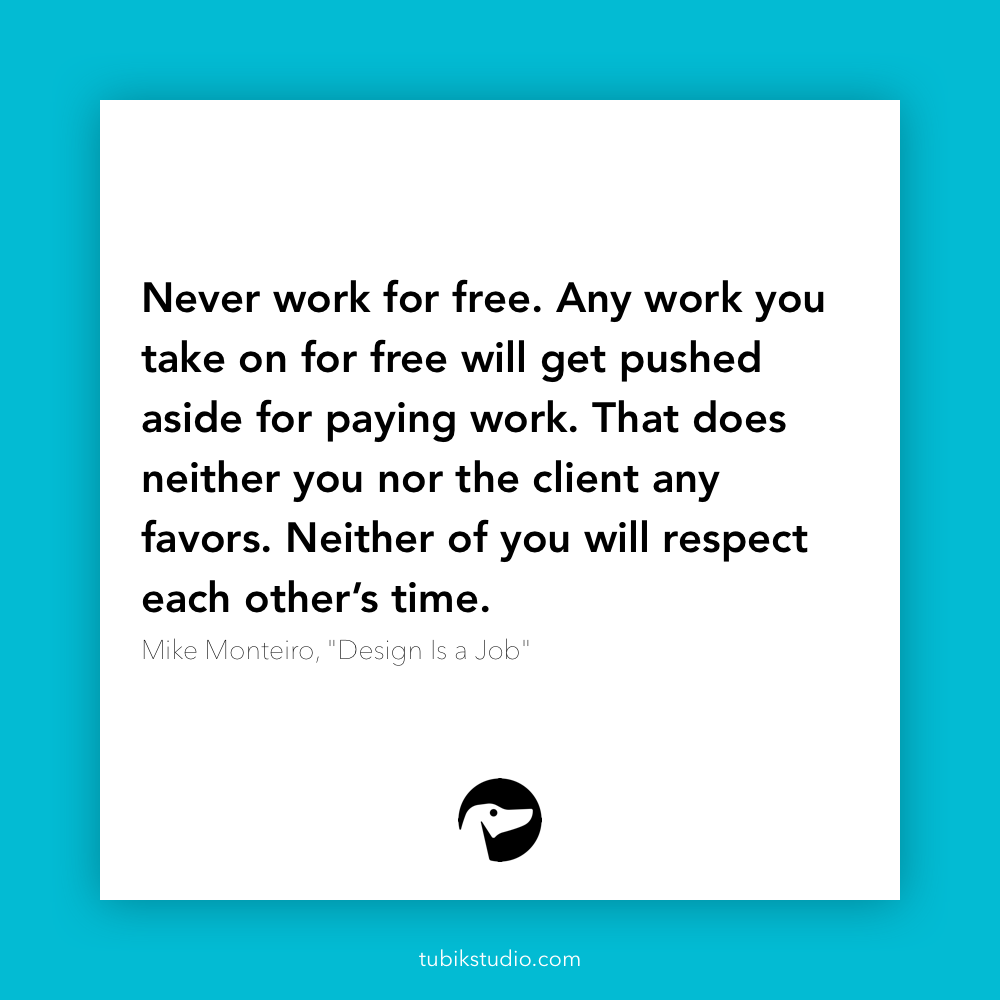
***
Never work for free. Any work you take on for free will get pushed aside for paying work. That does neither you nor the client any favors. Neither of you will respect each other’s time. If the situation merits it, work at a discounted rate. But submit a budget showing the actual rate, with the discount applied. Let the client know the value of what they’re getting.
***
Not knowing the design language doesn’t make someone a bad client.
***
Only you know the value of your time. (Hint: it is greater than $0.) But the value of your work to a particular client depends on what the client has to gain from that work. And the client is not buying time from you. They are buying work. The value of that work is what you need to charge them for.
***
As we tell potential clients when they ask us what their site will look like: “Oh, we have no damn idea. But we know what the process is for finding out.”
***
But much like the best umbrella is the umbrella you have on you, the best process is always the one you’re having success with. Don’t fall for trendy processes. If the one you’re using works for you, go with it.
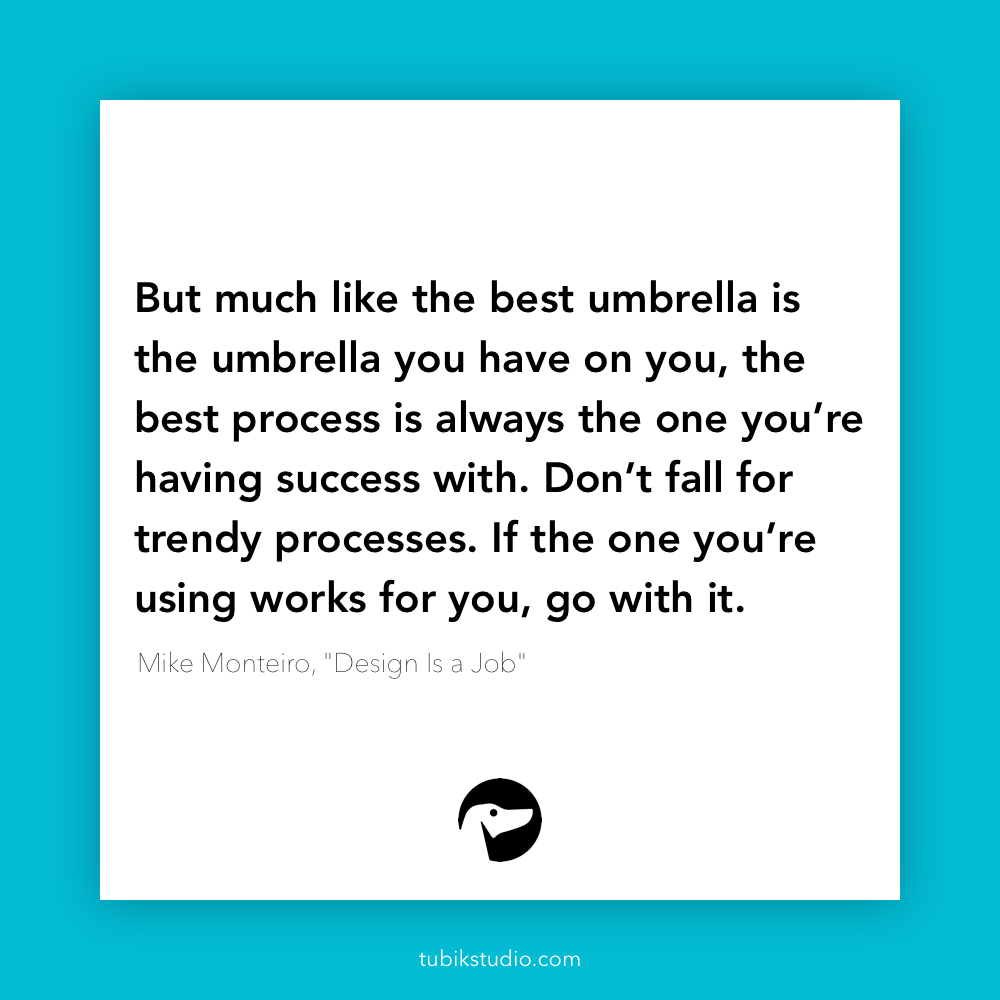
***
You’re not going to ask for permission to do things your way. You’re going to convince clients that your way works by showing them how you will use your process to meet their goals. And you’ll back this up by showing them how many times it’s worked in the past.
***
Throughout a project you may have to remind a client multiple times that they agreed to follow your process. And throughout a project you will have to convince a client that your process is actually on target to get them the results they need. There will be hand-holding. There will be tough love. But above all, you will have to stand your ground and stick to what you know works.
***
…just make it a habit never to speak ill of your clients. They’re paying your bills. And putting their livelihood in your hands. They’re good people.
***
Working with other (talented) designers makes you a better designer, and is essential to your professional development, especially early in your career. There’s simply no better way to learn your craft than to watch someone else practice it.
***
Not only can a designer change the world, a designer should. This is the best job in the world! Let’s do it right.
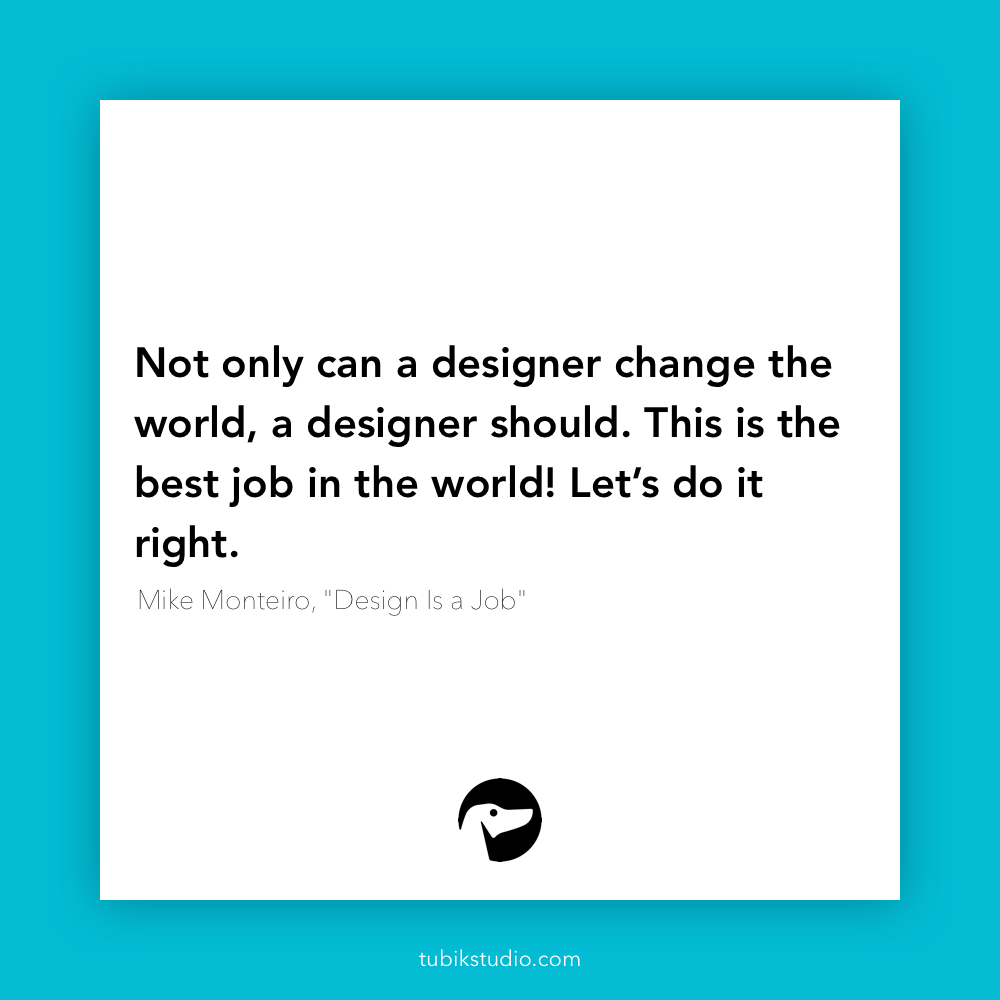
Welcome to check the quote collections from experts on usability, design for emotion, typography, branding, and content creation.
Welcome to watch expert speeches on design and TED-talks for designers.




